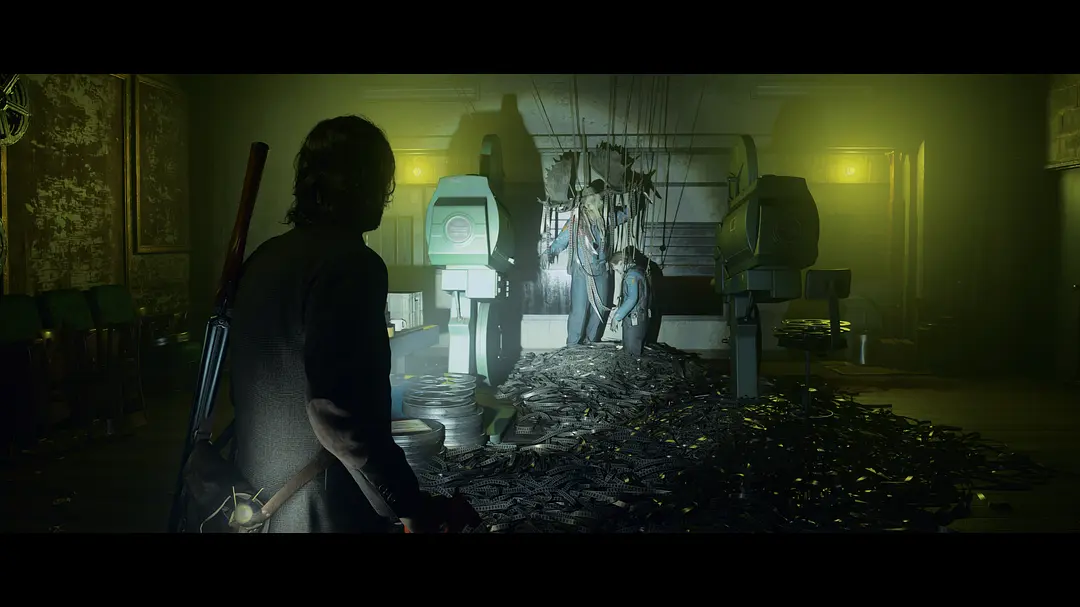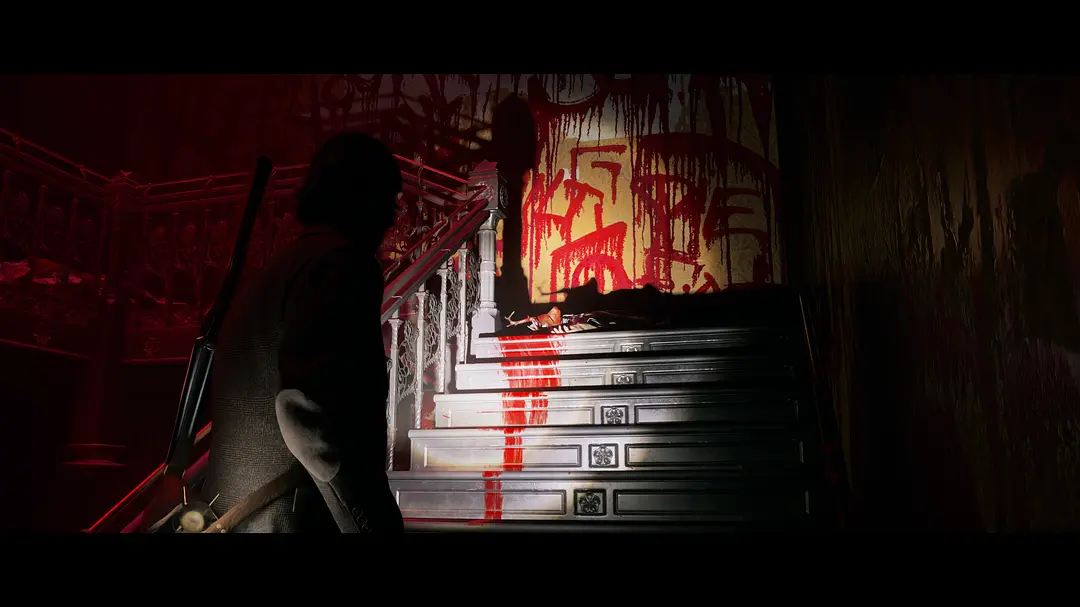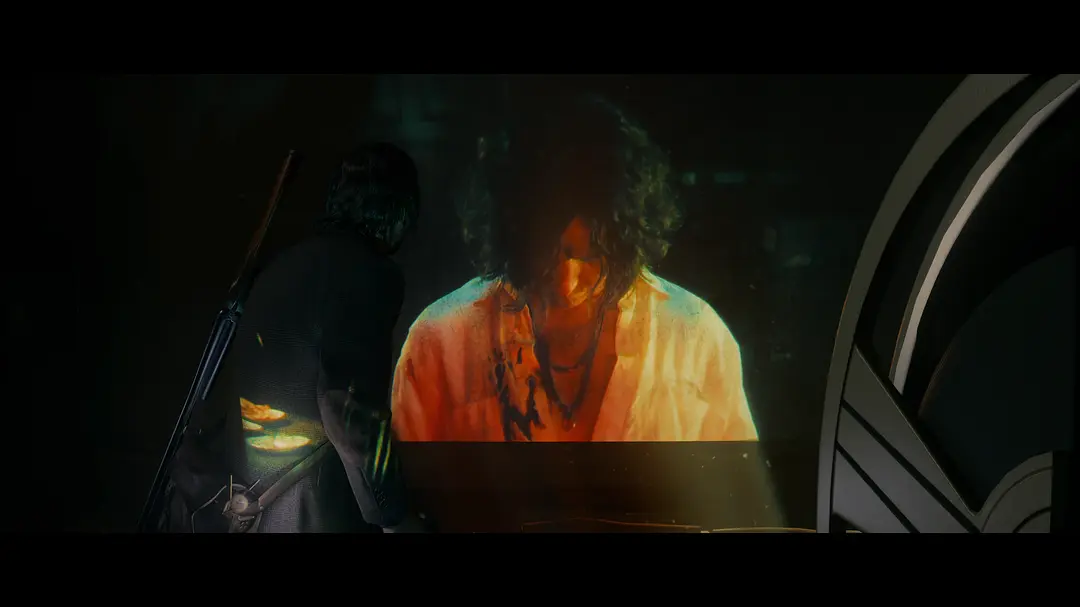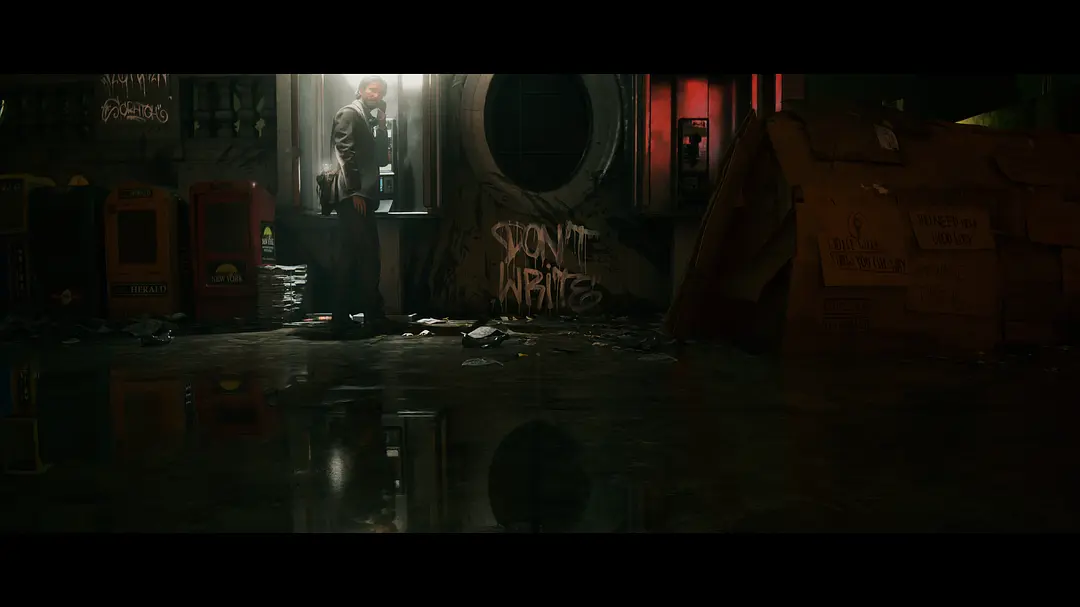For me, the perception of horror elements in games depends largely on the sensory experience of the picture and sound effects, and Alan Wake 2 completely conquered me in this regard. Mesh Shader technology makes the edges of objects in Alan Wake 2 extremely rounded, almost completely hiding the visually recognizable polygonal features. And Northlight Engine’s support for software ray tracing allows most of the lighting in the game to be reflected in real time without turning on hardware ray tracing. The picture experience brought by the combination of the two is really amazing to me.
(1) Setting and Narrative
The game is built on the real world, and the supernatural, bizarre, crazy, bloody and terrifying settings are extremely rich, so rich that it seems a bit incomplete for me to accept them all. Interestingly, the game’s story narrative does not produce a sense of confusion and surprise because of this. Alan Wake’s identity as a writer seems to be enough to endorse the rationality of all events. The detective gameplay generated from this further strengthens the integration of various elements in the game. This unique style of work in today’s games is so natural that it is incredible.

(2) Live performance
Sam Lake once mentioned in an interview that he respected Sam Barlow’s idea of using real-life images in “Immortality”. The many interactive gameplay possibilities it brought to the game had a profound impact on Alan Wake 2. In fact, the performance of real-life images runs through the entire process of the game, from Sajja’s mindscape and Allen’s planning board to videotapes and theater screen performances. The use of a large number of film and television techniques constantly emphasizes the reality of the narrative and strengthens my sense of immersion. It is worth mentioning that the excellent graphics and light and shadow performance of Alan Wake 2 make me feel that in the limited future, the two will be difficult to distinguish in terms of visual presentation.

(3) Color space
Alan Wake 2 creates a highly individual and recognizable color space in visual presentation. This visual element that runs through the entire process can be said to almost determine the tone of the emotional atmosphere in the game. Epic has published an article by Sam Lake about the creation of Alan Wake 2, mentioning the inspirational influence of the use of light and color in the movie Taxi Driver directed by Martin Scorsese on Alan Wake. Yellow taxis, red suits, neon streets and diffuse white fog, these features all appear in the dark place where Allen is trapped. The neon signs on the construction site outside the Capitol, the red carpets and walls inside the theater, and the devil’s bloodstains in the Seaview Hotel, Sam Lake does not hesitate to use the purest colors to occupy the main visual scenes of the game. The street graffiti on the wall may be one of the few surprises in the color palette. In contrast, the real world where Saga is located is completely another color system. The warmth of orange occupies most of the scenes where Saga appears. The sunset of the Cauldron Lake, the hanging lights in the restaurant, and the orange of the table lamps in the Valhalla Nursing Home are subjective expressions of the impression of the real world.

(4) Sound effects and music
The sudden increase in the decibel of the sound effect during Jump Scare is more adrenaline-pumping than the instantaneous switching of a few frames of horror images, and the whispering of the surround sound in the dark is more creepy than the darkness itself. The effect of turning up the volume to the maximum is much greater than expected in games with horror elements. Sam Lake expresses his love for rock music and guitar in Alan Wake 2. The Gods Performance level in Asgard even has a line of words carved on the ground: “WAIT FOR THE SOLO” as a guide to the level. It seems to be roaring at the player: “Hey! This is a guitar solo in rock music! Don’t move forward until you finish listening to it!” It is worth mentioning that the switch and amplifier functions of the magic switch should refer to the switch and amplifier of the electric guitar.

(5) Spiral scene changes
Lighting and Allen’s plot inspiration are two elements that can change the scene in the game. The loop and spiral transformation of the game scene appear at the end of all chapters without exception, which strengthens the gameplay and also hints at the direction of the plot. This design is closely tied to the visual expression of color. The change of the scene is characterized by the transformation of color space, which gives players a strong recognition. When I play this kind of cyclically changing scene, I always think of the experience of offline escape room. After exiting a certain door, I am faced with a quadrilateral endlessly rotating chase. After a while, there will be an exit again, and there will be a surprise of time and space conversion. The visual experience brought by the rapid conversion of scenes without loading in the game is somewhat similar.
